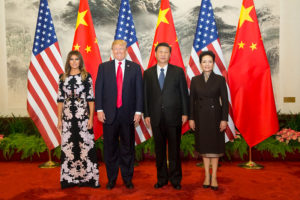
Without a doubt say the free-trade zealots, but free trade with China has always been an oxymoron. Free trade is a net benefit only if all participants are playing by the same rules. China has long used a different rule-book. Subsidizing industries, manipulating its currency, and pirating foreign technology are but a few of the many misdeeds that make the idea that we ever had free trade with China a farce.
The free-trade at all-cost proponents would have you believe that tariffs are always a direct tax on consumers. That may be what the textbooks say, but it isn’t always the case. In practice there are many factors determining who bears the cost of tariffs. If the Chinese yuan depreciates another 15% as a result of the boost in Trump’s tariffs, U.S. consumers and businesses would likely be no worse off than they are today. In this scenario, Chinese exporters who rely on dollar priced imports to produce their goods would suffer the most. Sounds like a win for us.
Even if China’s currency doesn’t depreciate, it is possible the bulk of the tariff cost would fall on Chinese firms and U.S. businesses. For commodity based products, U.S. firms buying from China should have the ability to negotiate prices down as a result of the tariff. For products where a full 15% price cut is not possible, it may be the case that U.S. firms, already running some of the highest profit margins on record, will maintain prices to consumers and give up a little bit of margin. Not great for businesses who need time to adjust supply-chains, but consumers make out OK.
This isn’t to say that tariffs are a pro-growth policy, or something that should be used without a strategic purpose. Tariffs can be a slippery slope, but then so can letting a single country, largely unaccountable to its people, unmotivated by private profit, hollow out the manufacturing sector of the U.S. and many other developed nations. Brett Arends writing at Marketwatch throws a flag on the media for stirring panic over tariffs that may not be as devastating for the U.S. as many would like you to believe. He writes:
There’s no serious doubt that some in the media would absolutely love to tank the stock market. They figure that would hurt Trump’s re-election chances in 2020. Monday’s stock market slump, which saw the Dow Jones Industrial Average DJIA, +0.45% tumble 2.4% and the Nasdaq Composite 3.4%, looked just like what the doctor ordered.
I write this, incidentally, as someone who is no fan of the president. But I remember when politics was supposed to stop at the water’s edge.
And, anyway, facts are facts. Most of what the public is being told about these tariffs is either misleading or a downright lie.
I’ve been following the coverage all weekend with my jaw on the floor.
Uncle Sam benefits
Yes, tariffs are “costs.” But they do not somehow destroy our money. They do not take our hard-earned dollars and burn them in a big pile. Tariffs are simply federal taxes. That’s it. The extra costs paid by importers, and consumers, goes to Uncle Sam, to distribute as he sees fit, including, for example, on Obamacare subsidies.
It wasn’t long ago the media was complaining because Trump was cutting taxes. Now it’s complaining he’s raising them. Confused? Me too.
And the amounts involved are trivial. Chicken feed.
President Trump just hiked tariffs from 10% to 25% on about $200 billion in Chinese imports. In other words, he just raised taxes by … $30 billion a year.
Oh, no!
The total amount we all paid in taxes last year — federal, state and local — was $5.51 trillion. This tax increase that has everyone’s panties in a twist is a rounding error.
Investors panic needlessly
Meanwhile, the total value wiped off U.S. stocks during Monday’s panic was about $700 billion. More than 20 years’ worth of the new tariffs.
Even if Trump slapped 25% taxes on all Chinese imports, it would come to a tax hike of … $135 billion a year. U.S. gross domestic product (GDP) last year: $20.5 trillion.
So even this supposedly scary “escalation” of this “tariff war” would, er, raise our total tax bill from 26.9% of GDP all the way to 27.5% of GDP.
Read more here.



